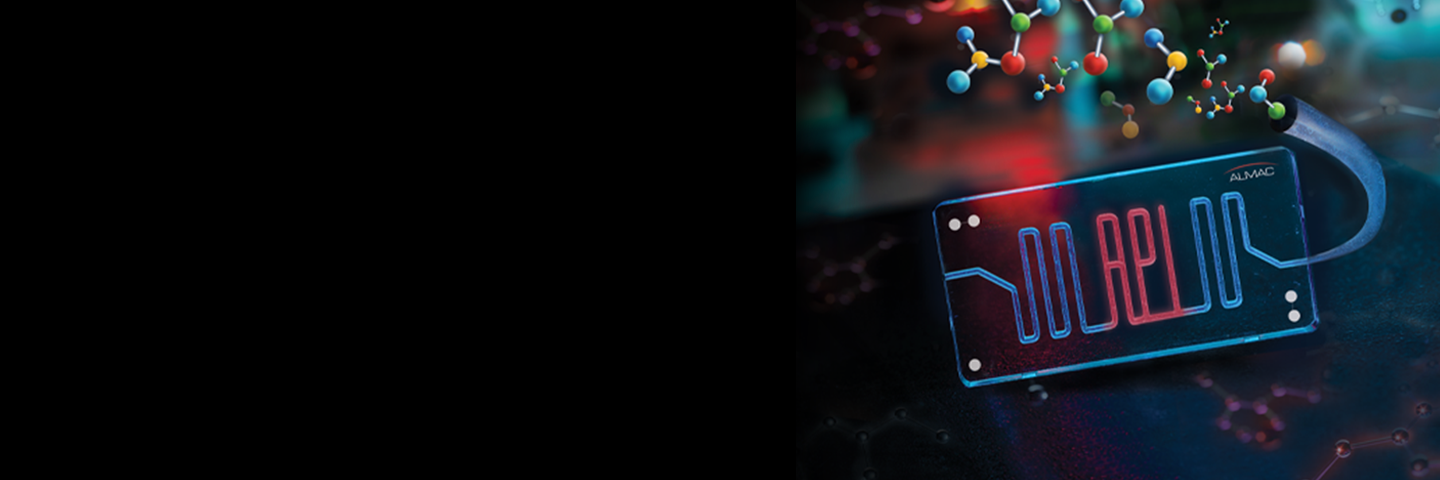Continuous flow manufacture is a technology platform which is gaining momentum within the pharmaceutical industry with reported FDA support for adoption into the manufacture of API’s.
Continuous Flow Chemistry opens up the possibility to access new synthetic routes to a given intermediate or API which are not achievable in conventional batch mode due to issues around safety, impurity formation and the instability of reactive intermediates.
For Almac’s partners, our continuous flow technology platform enables access to better synthetic strategies which are shorter, offer assured safety, reduce environmental impact and control of by-products. In addition, improved yields and improved reaction selectivity is achievable. With the reaction under tight control, the isolation of the product can be easier due to lowering of downstream process purification as a result of the higher quality product output. Almac aims to provide a union between batch and flow manufacture to overcome traditional batch limitations.
Flow technology is regarded as the most exciting and innovative growth technology for the preparation of API’s and we are delighted to now offer this within our portfolio as we continue to strive to provide world-class solutions to advance human health.
Continuous flow offers are a variety of advantages over traditional batch processing. There are five strategic drivers towards choosing Flow Chemistry over traditional batch as outlined below. Please click on the colored boxes below to find out more.
Continuous Flow Chemistry
Almac’s integrated flow technology platform can be applied throughout your product lifecycle to guide your synthesis project from conception to manufacture.
Make an enquiry
Faster reactions
Typically, under continuous flow, reactions are faster due to improved mixing and there is better heat transfer as a result of the smaller-scale architectures offering higher surface area to volume when compared with traditional batch vessels. Reaction rate is also increased by the ability to access temperatures and pressures inaccessible in batch and there is the potential for automated reaction screening.
Safer reactions
Continuous flow is inherently safer due to the small volumes reacting at any one time with reactive intermediates/hazardous reagents handled in situ.
Challenging reactions
Reactions which are difficult to scale up in batch, such as high pressure, high energy, oxidation or photochemical, can be performed under continuous flow
Product quality
Tight controls of stoichiometry improve product quality. In-line monitoring can identify a change in product quality and allow for diversion to waste eliminating failed batches. The ability to perform a controlled quench means a simple work-up with a reduced number of handling steps is typically required.
Smaller footprint
Equipment is much smaller than typical batch vessels with the ability to tailor the flow rig to suit the process and produce higher unit productivity.


